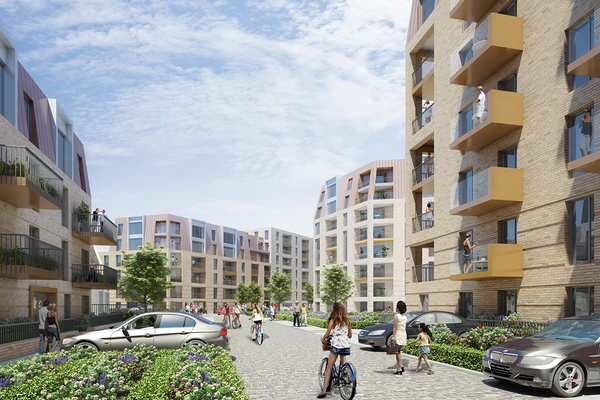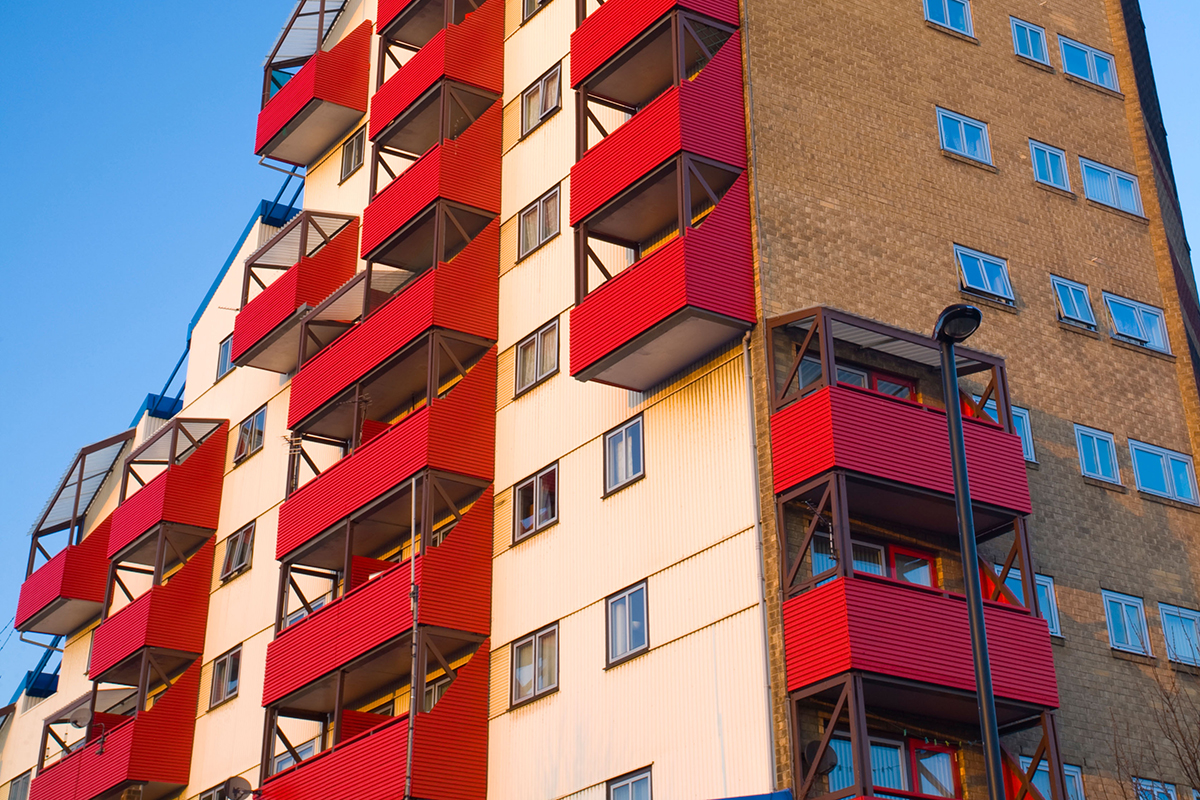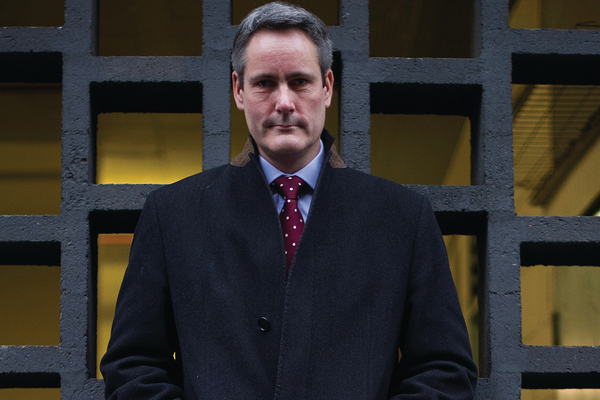You are viewing 1 of your 1 free articles
End of the road for regeneration in London?
As economic and political headwinds intensify, a number of high-profile estate regeneration projects look stuck. Luke Barratt investigates. Photography by Alamy
Last Wednesday, Kim Taylor-Smith, deputy leader of Kensington and Chelsea Council, attacked a developer’s plan to knock down two council estates in Earl’s Court, due to the loss of social housing it would entail.
In the controversial context of estate regeneration in the capital, this is a significant waymaker showing how much has changed in the past five years. The once bullish west London council – still reeling in the aftermath of Grenfell – no longer wants to be seen as on the side of the developers, fearful of being judged to oppose residents and campaigners.
This is a microcosm of the climate across the city. Those planning estate regeneration in London currently have to battle two extreme headwinds. The first is political, and has grown out of lengthy and vocal protests against regeneration schemes.
The second is economic, and reflects the trouble in the prime end of the London market in recent months. In Earl’s Court, the valuation of the scheme was announced to have fallen from £1.4bn to £1.1bn in February last year. This means the economic logic that had driven regeneration here and in other parts of London – the sale of luxury flats funding improvements and densification – no longer works in some areas. With this in mind, does estate regeneration have a future in London?
The focus on the capital here is deliberate. The picture for estate regeneration in London is very different to the rest of the country; in lower-value markets you need investment to raise land values, the politics are often less dramatic and there isn’t such a sense of a turning point as the capital is currently experiencing.
Turning to London’s economic story first, according to figures released this month by property data experts Molior London, the prime market is not in a happy place. More than half the 1,900 luxury new builds completed last year are failing to sell.
Neal Hudson, director of Residential Analysts, notes: “Central London’s house prices peaked in 2014 and the market has really been struggling. Prices have been falling, turnover’s been falling. A lot of the assumptions that went into the models behind [estate regeneration] projects five years ago [would be different now]. The reality is looking less rosy than it was.”
While this may pose difficulties for programmes based on the sale of prime flats, it is important to remember that some areas are unaffected.
Outside central areas, Lambeth Council has identified six estates it wants to regenerate and will loan its housing company £300m for the projects. It predicts that house prices are likely to continue to rise in the borough to fund its proposals.
Meanwhile, Peabody is pushing ahead with its huge Thamesmead regeneration, counting on Crossrail to push up prices in the area. Peabody’s plans illustrate another possible consequence of current market conditions: if house prices won’t rise on their own, regeneration schemes will have to take into account other means of adding value.
“There’s an unhelpful narrative around social cleansing." - Paul Hackett, chair of the G15 group of London housing associations
Brexit is another worry. Paul Hackett, chair of the G15 group of London housing associations, tells Inside Housing: “Because these schemes are multi-phase, multi-year projects, trying to get contractors to price for a scheme where they’re locked into a cost plan for a number of years will be more difficult because of that uncertainty.”
Then there’s the politics. London mayor Sadiq Khan made waves last month when he rejected Genesis and Barnet Council’s plans for the demolition of the Grahame Park Estate in Barnet. The bugbear was the planned loss of more than 200 socially rented homes; Mr Khan called it “a classic example of how not to do estate regeneration”.
Mr Khan is not inherently anti-estate regeneration – something his official guidance, which is expected to be published imminently, is likely to show. But if he is demanding higher numbers of social housing, that makes schemes tougher to stack up economically. Genesis says that its “focus [for Grahame Park is] very much on working positively with our partners at Barnet Council and the GLA [Greater London Authority]”.
The London Assembly is not the only place where political opposition to estate regeneration is playing out. In Haringey, plans for a £4bn development vehicle in partnership with Lendlease look set to cost many councillors their future, with party members deselecting 21 who support the proposals.
Sian Berry, chair of the GLA’s Housing Committee and leader of the Green Party Group in London, echoes the views of other sector figures when she tells Inside Housing that events in Haringey will make other councillors think twice before approving controversial schemes.
But this doesn’t mean the end of all regeneration. Ms Berry argues: “It will lead to less dramatic options. It will affect specifically what [councils] put forward. They’ll look more at infill, they’ll take more seriously things like ‘people’s plans’.”
One regeneration director at a large association says politics has made estate regeneration “particularly difficult” at the moment.
They add: “That’s certainly shaping some thinking as to whether to bring schemes forward or not. The one thing you crave in regeneration is stability, because these are long-term investments and we’re making big, long-term commitments.”
"Getting politicians and local campaigners on board is more challenging than ever"
Mr Hackett adds: “Political uncertainty can add to potentially abortive costs and those will put many potential players off getting involved in some of these larger, more difficult schemes. There’s an unhelpful narrative around social cleansing, around people being forced out of their neighbourhoods, which absolutely isn’t what regeneration is about. Regeneration done well can help existing communities, improve housing conditions and enable more people to be housed.”
This argument is the one made by many of those in the sector who believe in regeneration schemes. But getting politicians and local campaigners on board is more challenging than ever. While it may not be the end of the road, the path ahead certainly looks rocky.












